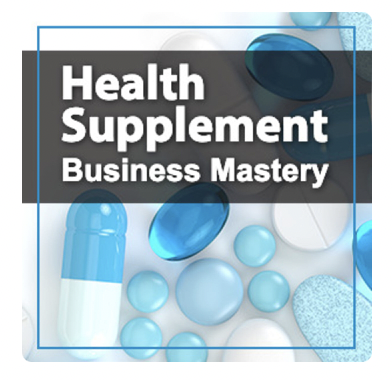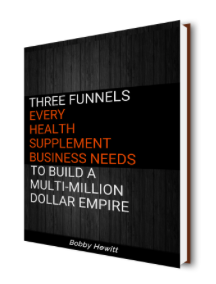The typical sales approach of a product detail page often doesn’t work for dietary supplement e-commerce sales pages.
One reason for that is that people buy dietary supplements differently than they buy any other product.
Another is that most supplement brand marketers are afraid of long sales copy.
They think that no one will read a long sales page.
They mistakenly assume that readers will not bother to read long-form sales letters or landing pages, but the reality is the health buyer is different.
The health supplement buyer that is looking to research as much as buy, long sales copy can be a benefit.
Not only a benefit to the reader if the sales copy informs and educates but also as a benefit to the brand, since long sales copy always out performs short sales copy, in my experience.
But it’s not simply length that’s the key.
Knowing how people read sales copy is important.
Different reader types, read sales copy in their own unique way.
The 3 Types of Readers and How They Impact Your Dietary Supplement Sales Page
There are three types of readers.
The first type of reader is someone who glances at the headline and scans through the copy.
If there is enough information that interests them, they may even make a purchase based on that alone.
The second type of reader goes a little deeper at first.
They read certain sections first.
Like the headline and bullet points before diving into the long-copy.
They may be attracted to specific image captions or photographs.
And they are able to make a purchasing decision based on this limited information.
Finally, the third type of reader is the most thorough.
They read every word (they may even read certain sections twice) but doing so in a non-linear fashion.
They moves around the page, skipping around the copy, often looking for the price point before diving in deeper.
Rarely do they ever read in a linear top down path, but sometimes they do.
Years of studying the heat-maps, scroll-maps and session recordings of dietary supplement sales pages have taught me this.
Heat-maps, scroll-maps visually show how people interact with a web page. And session recordings show in real time what the visitor is doing with their mouse.
It’s the next best thing to sitting down next to a potential buyer and observing them while asking them questions.
A surprising find is that some of those third types of readers consume the page from the bottom up.
Skimming the top section to understand what the page is about. Then scrolling all the way down and skimming from the bottom up. Then back to the buy box to make a purchase.
The Surprising Reason Why Long-Form Sales Pages Work for Dietary Supplement E-Commerce
If Only Marketing Copywriters Knew This…
As a copywriter or marketer, understanding how people read copy is crucial for creating effective marketing materials.
Unfortunately most copywriters don’t study the interaction of the visitor to the page.
How the copy is written for each type of reader is just as important as the words itself.
As a copywriter or marketer, it is essential to consider all three types of readers.
And to write sales copy that appeals to all three types.
The first type of reader, the skimmer, needs easily digestible bits with bolded text, pull quotes, captions, and bulleted lists.
The second type of reader, who goes a little deeper, needs sub headlines that draw her in to read the sections she’s most interested in.
And the third type of reader, who is the most thorough, needs dense copy to be broken up into chunks.
Strategic use of video on the product detail page is also a great way to appeal to this type of person. Although if they are a reader they will prefer to read.
Revealed: The Winning Combination of Copywriting and Design for Dietary Supplement E-Commerce Success
The key to making a long form sales page or product detail page work is not just the copy itself.
Unfortunately, not all copywriters understand graphic design for direct response.
It’s the design of the page that copywriters can’t really do. It’s just not their skillset.
Yet the design of a long form page can mean the difference between success and failure.
Web design has a significant impact on how readers engage with the copy.
A direct response graphic designer must also understand the three types of readers and how they consume the page.
In addition to understanding the psychology behind the copy they are laying out on the page.
Unfortunately, not all designers understand the principles of direct response marketing, or copywriting, which can lead to killing of otherwise excellent copywriting.
And to design the sales page to appeal to all three types of readers.
The skimmer, needs visual speed bumps that catch the eye and slow down scrolling, drawing readers’ attention to specific points in the copy.
The second and third type reader, who go a little deeper, and those who are more thorough, need line spacing, the space between each line of copy to be properly spaced, so it does not feel like an overwhelming wall of text.
Mobile design considerations also effect each type of reader.
But generally optimizing for mobile works well for all three types at the same time.
For example, strategic removal of elements, so as not to slow down any of the three types of readers is critical on a mobile device.
Understanding how people read copy is crucial for sales conversion rates of any webpage where you’re asking for a transaction especially those that sell dietary supplements.
Which are a more complex sale and need a bit more explanation than an average e-Commerce product.
Remember, all visitors fall into one of three reading categories, and good marketing, both copy and design, should appeal to all of them.
The harmony of both copywriting and design can create marketing that drives sales conversions.
Discover the 3 funnels that can help your health supplement business succeed.

Listen to the Health Supplement Business Mastery Podcast for for dietary supplement entrepreneurs and marketers.



